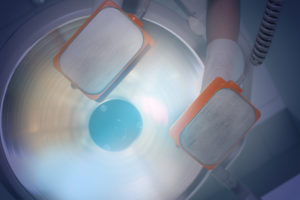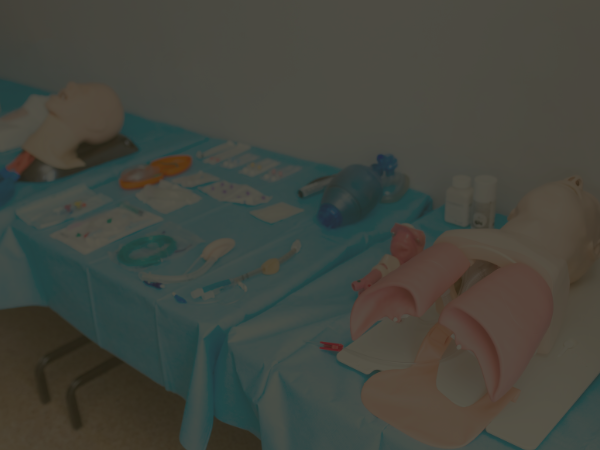Your cart is currently empty!
Synchronized Cardioversion: Step-by-Step Guide for Medical Rescuers
Synchronized cardioversion may not seem like something you have to know as a bystander. As a rescuer, it could be critical. Providing CPR to a person who needs immediate medical care is a necessary step in protecting a person’s life.
Yet, there are many instances in which the heart needs to be jolted by electricity to get it to start pumping again. Synchronized cardioversion is one way to achieve this.
What is Synchronized Cardioversion?

A person’s heart rhythm determines how efficiently and effectively the organ can move blood through the body. The pumping action of the heart occurs as tiny electrical shocks are sent to the muscles, causing them to contract.
When that process is out of rhythm, it can strain the heart and make it inefficient. Getting it back into rhythm takes administering another shock.
Synchronized cardioversion is a life-saving procedure performed to treat certain arrhythmias when medication is unable to convert those rhythms to a normal rhythm. This method involves a low-energy shock to the chest.
It is similar to defibrillation but synchronizes the process to deliver a shock at a very precise moment to convert to the proper rhythm.
Synchronized cardioversion specifically targets the moment when the QRS complex peaks. When this happens, it’s called the R wave. It would be impossible for a person to target this timing properly.
However, with a defibrillator, a skilled rescuer can select the “SYNC” setting on the device before operating it. In doing so, it will deliver a shock to the heart at just the right moment to create the desired action.
The machine synchronizes itself with the patient’s ECG rhythm. Now, the device knows when the QRS complex peaks on the R wave. As a result, it can deliver a precisely timed shock to obtain the desired effect.
When Do You Use Synchronized Cardioversion Vs. Unsynchronized
In the moment of an emergency, it is often best to take steps to grab a defibrillator and use it. However, there are some indications that using synchronized cardioversion is the better decision.
Unsynchronized cardioversion delivers a high energy shock when the rescuer presses the button. It relies on a person to try to time the shock (or not) to get the desired result. Most often, this means the shock occurs randomly in the cardiac rhythm cycle (QRS complex).
There are times when the shock will happen at the wrong time, further stressing the heart or failing to alter the rhythm enough to create the desired outcome. When possible, then, using synchronization is the better choice.
Use defibrillation when:
- If a person has no pulse, they do not have any electrical activity taking place. This is called pulseless ventricular tachycardia (VT) or ventricular fibrillation (VF). In this situation, there is no electric activity present, and therefore, you cannot hit at the wrong time.
Instead, using synchronized cardioversion will help to change the rhythm in the sinus – which means it is pumping at the right pace.
The synchronization prevents hitting of the T wave by timing the LOW ENERGY shock so that it does not happen during cardiac repolarization (t-wave), which would be very likely to cause VF (Ventricular Fibrillation).
Instead, it shocks at the QRS peak to restore a normal rhythm. It goes beyond that to hit the R wave precisely instead.
Use synchronized defibrillation when:
- Most other times. In situations where it is possible that a person’s heart is beating but is beating at the wrong rate or out of order, using this method works better.
What is the Difference Between Cardioversion and Defibrillation
The cardioversion vs defibrillation is often a confusing one. In short, the terms are often used interchangeably, and they do mean much the same thing. However, the use of “defibrillation” typically means using an unsynchronized shock to the heart. This is a high-energy shock or unsynchronized cardioversion.
Most of the time, when a professional is using the term “cardioversion” they are referring to a synchronized cardioversion. The cardioversion vs defibrillation difference, then, is somewhat related to who is describing what is occurring.
When to Use Synchronized Cardioversion Joules
Apply defibrillation during an immediate life-threatening event where the heart has stopped. The patient has no pulse. There are three primary indicators for defibrillation, and these are:
- Pulseless ventricular tachycardia
- Ventricular fibrillation
- Cardiac arrest that either results from or causes ventricular fibrillation
You can view Save a Life by NHCPS’s Adult Cardiac Arrest Algorithm to learn more about defibrillation.
On the other hand, cardioversion (aka synchronized cardioversion) converts the rhythm from arrhythmia to normal. You should always safely cardiovert a person with proper training.
What is Synchronized Shock Therapy?
Synchronized shock therapy is a less commonly used name for synchronized cardioversion. It refers to the fact that the rescuer administers a shock during the treatment. You’re unlikely to hear this in a professional setting.
When Should You Perform Synchronized Cardioversion?
Most of the time, only a licensed medical professional with training will perform a synchronized cardioversion. It typically occurs in situations where the heart is beating very fast or is beating irregularly over some time. The first course of action is generally medication to slow the rate and allow the heart to return to a natural beat on its own. If that does not happen, synchronized cardioversion rhythms may be sought.
To better understand when synchronized cardioversion is used, consider the following:
- Tachycardia: This means the heart is beating too fast.
- Fibrillation: The heart is beating fast or slow but in an erratic pattern
- Flutter: This term refers to fibrillation in which the heart is out of rhythm
It is also beneficial to use synchronized cardioversion vs defibrillation when there are any of the following heart rhythms detected:
- Unstable Atrial fibrillation (AF)
- Atrial flutter (types I and II)
- Atrial tachycardia
- Ventricular tachycardia with a pulse
- Supraventricular tachycardia
In a location where there is the ability to gather information about the heart rhythm accurately, read the rhythm strip to determine what steps to take.
For example, if a VFIB rhythm strip is evident, using this method to cardiovert the individual may be beneficial within a controlled environment. Cardioversion for Afib is also common if the heart rate is very fast.
The Importance of Correcting Irregular Cardiac Rhythms
Not all abnormal rhythms can be corrected. In some situations, cardioversions fail to treat the irregular rhythm, and additional treatment methods may be necessary to protect a person’s health.
Rescuers may need to correct an irregular rhythm in the event of an emergency. A severe episode of atrial or ventricular tachycardia is an example of when you will benefit from this process.
You may follow the Adult Tachycardia With Pulse Algorithm, which takes you through the steps to determine when synchronized cardioversion is required. This algorithm is part of Save a Life by NHCPS’s Advanced Cardiac Life Support (ACLS) course, which you can take for free online.
The Dangers of Atrial Fibrillation and Flutter
According to Mayo Clinic (MayoClinic. org), atrial fibrillation (or its lesser cousin, atrial flutter) can cause:
- Chest pain
- Dizziness
- Fatigue
- Weakness
- Trouble exercising
- Shortness of breath
Left untreated, it can lead to blood clots and stroke.
The Dangers of Atrial and Ventricular Tachycardia
According to Mayo Clinic (MayoClinic.org), tachycardia causes:
- The sensation of a racing or pounding heart
- Fainting
- Lightheadedness
- Shortness of breath
In an extreme case, you’re at risk of injuring yourself during an episode, heart failure, and sudden death.
Differences Between Monophasic and Biphasic Systems
There are two basic types of cardioversion systems–monophasic and biphasic.
Monophasic
- Energy flows in one direction from one paddle to the other
- Higher energy shock (360 Joules) and greater damage to tissue
- Only around a 60% chance of restoring rhythm on the first shock
Biphasic
- Energy flows in one direction between paddles, then reverses and returns several times
- Lower energy (150 and 200 Joules) with less tissue damage
- 90% first shock success rate
How Does Synchronized Cardioversion Work?
A specialized node in the upper right heart called a sinus node manages the heart’s pace. It’s usually influenced by environmental and emotional factors like stress, substances, hormones, and exercise. If your heart “skips a beat” when you’re surprised, your sinus node did that. Your heart speeds up when you exercise to accommodate blood flow needs and slows down when you sleep. These represent the sinus node’s responsibility. These momentary disruptions and changes are normal and quickly balance themselves out.
However, sometimes, a pattern occurs that the heart can’t get out of. Like a song you can’t get out of your head, the rhythm feeds itself, creating a loop.
It self-perpetuates.
When you shock the heart to alter the rhythm, you’re actually influencing how the sinus node manages the heart rhythm.
The intermediate delivery of an electrical shock to the heart causes a momentary depolarization of the heart cells. This split-second change of heart cells from a negative to a positive charge. This gives the sinus node a chance for a fresh start. Now, the sinus node can restart the heart with a normal sinus rhythm.
A Brief History of Synchronized Cardioversion
In 1775, a Danish veterinarian by the name of Peter Christian Abildgaard first used electricity to stop and start the heart of hens, to understand how electricity might help physicians manage a stopped heart (Pubmed.gov).
Much later, in 1947, an Ohio cardiac surgeon named Claude Beck, who was well-known for his innovative techniques, first used direct current to successfully treat ventricular defibrillation (VF) in a 14-year-old boy during open-heart surgery.
Beck “experimentally” performed the shock out of desperation after other more-accepted rhythm-restoring procedures failed to work. But after his success, the procedure underwent testing and quickly became more widely accepted (Pubmed.gov).
According to the New England Journal of Medicine (NEJM.com), later in 1963, Bernard Lown M.D. et al. conducted a controlled experiment in which they used synchronized shocks to the heart to convert atrial fibrillation into ventricular tachycardia and then to a normal rhythm.
The biphasic waveform, the machine we use today to automatically synchronize with a patient’s rhythm and apply lower energy shocks, did not exist until the 1980s.
Performing a Synchronized Cardioversion

Before performing these procedures, it’s important to prepare the patient.
If this were a cardiac arrest where you use defibrillation to restart the heart, you’d act very quickly and have little time to prepare the patient.
But during cardioversion, you need to act quickly. However, the patient is not in an immediate life-threatening emergency. So your rescue team should take time to prepare the patient for the highest possibility of success.
1. Get the Patient’s Rhythm
Identify the patient’s current rhythm using a 12-lead EKG unless you have no doubt about the patient’s rhythm.
2. Insert an IV and Start Sedation
You will also provide proper IV sedation to the patient since cardioversion is painful. If this isn’t possible, you also have other options, such as hypnotic agents, sedative agents, and additional analgesics.
3. Make Sure Emergency Equipment Is On Hand
These include items like a suction device and a bag-mask device in case you need to provide manual ventilation, as well as more advanced airway management tools, including intubation tubes.
4. Shave the Chest
Shave any chest hair to avoid interference with electrodes
5. Provide Oxygen, if Needed
Provide supplemental oxygen according to facility guidelines. A CO2 monitor is also recommended to track levels
6. Place the Electrodes
The first one goes on the right side of the chest below the clavicle. The second goes two inches below the mid-axillary line. That’s to the left side of the left nipple.
7. Press the Sync Button
Now, it’s time to see synchronized cardioversion in action. The defibrillator will pause to follow the heart rhythm, attempting to sync with it. Take a look at the rhythm strip to make sure the machine is finding and marking the R Wave.
8. Select the Appropriate Energy Level
This is determined by standard procedures.
9. Call “clear”
Everyone should be ready to expect a delay after “clear” is called.
10. Reassess the Patient’s Rhythm
If the patient’s rhythm does not convert, press SYNC again and repeat the procedure. Don’t forget to press sync, as a defibrillator will always revert to defibrillation mode after the shock. Continue to monitor the patient.
Frequently Asked Questions
What Patients Do Not Benefit from Cardioversion?
Cardioversion does not help a person who has incessant arrhythmias, meaning that cardioversions no longer help to correct the abnormal rhythm. If the underlying cause of the dysrhythmia does not change, such as damage to the muscle walls, it is not helpful to use synchronized cardioversions.
What Are the Risks of Synchronized Cardioversions?
The risks of Synchronized Cardioversions for both medical professionals and patients exist.
For example, according to MedScape, injuries to paramedics performing shock therapies have been reported at a rate of one case per 1700. Other medical professionals aren’t doing any better. Doctor and nurse injury rates are at around one for every 1000 shocks administered. In other words, if you perform defibrillation or cardioversion with any frequency, you’re likely to get shocked from time to time.
As for the patients, hypoxia (lack of oxygen) or hypoventilation (shallow, insufficient breathing) during sedation does happen. That’s why it’s important to be ready to support breathing or intubate if needed. Most burns are superficial and will heal.
In more extreme cases, patients can develop severe bradycardia ( dangerously slow heart rate) or asystole (flatline/stopping of the mechanical or electrical function of the heart). Certain conditions can increase these risks.
Final Verdict:
Synchronized cardioversion is one of many advanced life-saving techniques you’ll learn and become confident performing within your scope of practice when you get your Advanced Cardiac Life Support Certification online. Share your wisdom and thoughts in the comments below, or head on over to the discussion about this post on Facebook.







Leave a Reply